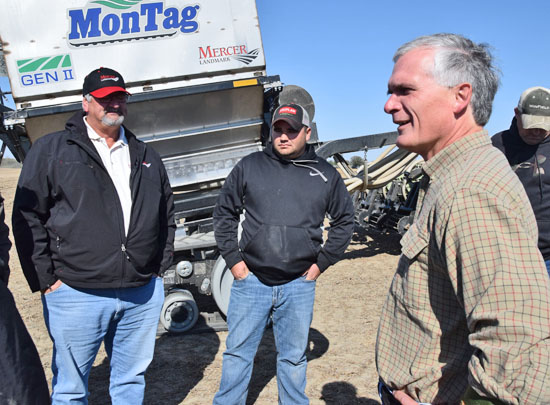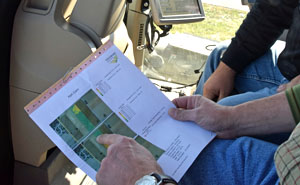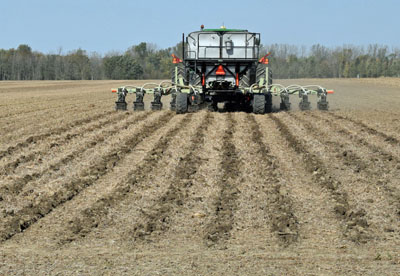Latta gets farm practices demonstration
DAVE MOSIER/independent editor
PAYNE — In today’s agriculture, particularly in the application of fertilizer and other ag-based chemicals, precision is the name of the game.

U.S. Representative Bob Latta got the chance to see some precision ag technology in action on Monday afternoon as he watched — and participated in — a demonstration of GPS-based fertilizer application on a farm near Payne in Paulding County.
Latta met with representatives of Mercer Landmark in Payne and then visited a farm just south of the village where a demonstration of a new precision strip-tillage was being conducted. The local demonstration was the result of state and federal grant money aimed at reducing agricultural runoff into Ohio’s waterways.
Ag runoff has been blamed for algae blooms and other problems seen in Ohio waterways, including Lake Erie and Grand Lake St. Marys.
“This has come a long way from when my grandfather was working with a team of horses and putting whatever on,” Latta said following the demonstration. “Today, we can get it down to an exact science.”
The process is a complex, but established one. Farmers obtain soil samples on their acreage and provide that information to Mercer Landmark. Then, Jason Diller, Mercer Landmark’s precision agriculture manager, analyzes the data using information provided by The Ohio State University Extension Service.
Diller said his analysis provides a GPS-based “prescription” on how much fertilizer or other chemical should be used on the farmland, broken down into 2-acre squares.

The equipment then applies the proper amount of ag chemicals needed for each two-acre square, using GPS technology.
Kip Studer of the Ohio Department of Natural Resources’ Division of Soil and Water, noted that funding for the Mercer Landmark project were provided mostly by the state, with some federal dollars, including Lake Erie prep funds and also funding from a Great Lakes Restoration Initiative grant.

Strip-tillage application equipment that can apply chemicals to 12 rows at a time was purchased to apply fertilizer and other ag chemicals, while a John Deere tractor was leased from local farm implement dealer The Kenn-Feld Group.
On Monday, potash was being applied to provide potassium to the soil prior to planting. To better avoid agriculture runoff, the chemical was being applied several inches below the soil, which was then replaced over the furrows to seal in the chemicals.
Latta said he was impressed with the technology, which also had a side benefit for the federal legislator who also got to drive the tractor.
“That’s different than driving my grandfather’s old Oliver,” Latta said when he climbed down from the huge machine.
POSTED: 10/20/15 at 8:02 am. FILED UNDER: News







